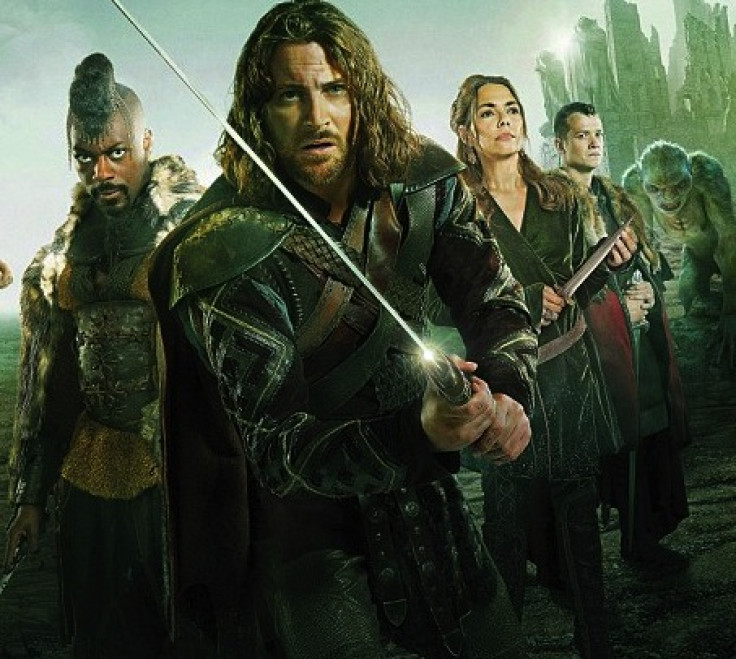Beowulf: Who was the real-life hero behind ITV's latest swords and monsters tale?

Beowulf: Return to the Shieldlands, one of the most expensive dramas made by ITV, is aimed at rivalling Game of Thrones. The TV series, which cost around £17m, is inspired by the original epic poem about a warrior who kills demons and monsters.
"Hundreds of years ago our ancestors listened to the story of Beowulf because it was a great adventure story – it scared them, thrilled them, made them laugh and cry. But they also listened because they recognised themselves and their fears in it," said James Dormer, writer and executive producer of the 12-part drama series.
Kieran Bew, star of Da Vinci's Demons, takes the title role of the Anglo-Saxon hero Beowulf. The ex-fencing champion was already fascinated by the story of the titular hero in the TV series.
"About 10 years ago, in between acting jobs, I gave myself a pet project to try and write something about the Norman Conquest. Then I started looking further back to the Vikings' conquest and looked at all the sagas and Icelandic poetry which led me to Beowulf and Anglo-Saxon Britain. It's a brutal time and the stories are so rich and dark. I'd read the Seamus Heaney translation of the Beowulf poem and recently looked at the Tolkein one as well.
"The Beowulf poem itself spawned The Hobbit and The Lord of the Rings.
"During the period of time in the poem of the Dark Ages certain pockets of Britain had lost the knowledge the Romans had brought. People found swords in the ground which were of a better metal and better forged than anything they could produce and so these were magical weapons."
William Hurt, who plays Hrothgar, king of the Danes, studied Beowulf at college. "The Vikings is a great, huge civilisation that is, in some ways, lost to us. People are very attracted to it in terms of its grandiose proportions. This is the primeval human epic of the beast – and the beast in us. The beast that evolved out of the things we loved. Who you fall in love with can turn into your greatest enemy.
"I don't think there is a more important ancient piece of writing. It's among the few most precious human artifacts, because it's the first of its kind, at least for this part of the northern European world."
Beowulf is the longest epic poem in Old English, the language spoken in Anglo-Saxon England before the Norman Conquest. More than 3,000 lines long, Beowulf relates the exploits of its eponymous hero, and his successive battles with a monster named Grendel, with Grendel's revengeful mother, and with a dragon which was guarding a hoard of treasure.
The story of Beowulf
Beowulf is a classic tale of the triumph of good over evil, and divides neatly into three acts. The poem opens in Denmark, where Grendel is terrorising the kingdom. The Geatish prince Beowulf hears of his neighbours' plight, and sails to their aid with a band of warriors. Beowulf encounters Grendel in unarmed combat, and deals the monster its death-blow by ripping off its arm.
There is much rejoicing among the Danes; but Grendel's loathsome mother takes her revenge, and makes a brutal attack upon the king's hall. Beowulf seeks out the hag in her underwater lair, and slays her after an almighty struggle. Once more there is much rejoicing, and Beowulf is rewarded with many gifts. The poem culminates 50 years later, in Beowulf's old age. Now king of the Geats, his own realm is faced with a rampaging dragon, which had been guarding a treasure-hoard. Beowulf enters the dragon's mound and kills his foe, but not before he himself has been fatally wounded.
Nobody knows for certain when the poem was first composed. Beowulf is set in the pagan world of sixth-century Scandinavia, but it also contains echoes of Christian tradition. The poem must have been passed down orally over many generations, and modified by each successive bard, until the existing copy was made at an unknown location in Anglo-Saxon England.
Beowulf survives in a single medieval manuscript, housed at the British Library in London. The manuscript bears no date, and so its age has to be calculated by analysing the scribes' handwriting. Some scholars have suggested that the manuscript was made at the end of the 10th century, others in the early decades of the 11th, perhaps as late as the reign of King Cnut, who ruled England from 1016 until 1035.
The most likely time for Beowulf to have been copied is the early 11th century, which makes the manuscript approximately 1,000 years old.
Historical evidence behind the myth
An archaeological investigation has uncovered a royal feasting hall in Lejre, the royal centre of Denmark in the sixth to 10th centuries AD. Analysis of feasting debris, especially around the site of the hall that dates back to the era associated with Beowulf with the remains of hundreds of suckling pigs, cattle, sheep, goats, deer, chicken, geese, ducks and fish.
Recent analysis of bronze, silver and gold treasures found during excavations in the area has also identified as many as 40 pieces of jewellery, including some made of solid gold, together with pottery drinking vessels imported from England and Germany. Other finds made during the past four years have included a hoard of 20 fragments of gold rings and bars, a silver figurine of the ancient Nordic god Odin and the remains of an eagle.
Tom Christensen, curator at Denmark's Roskilde Museum and director of the Lejre project, said: "For the first time, archaeology is giving us a glimpse of life in the key royal Danish site associated with the Beowulf legend."
Beowulf: Return to the Shieldlands begins on Sunday, 3 January at 7pm on ITV.
© Copyright IBTimes 2024. All rights reserved.






